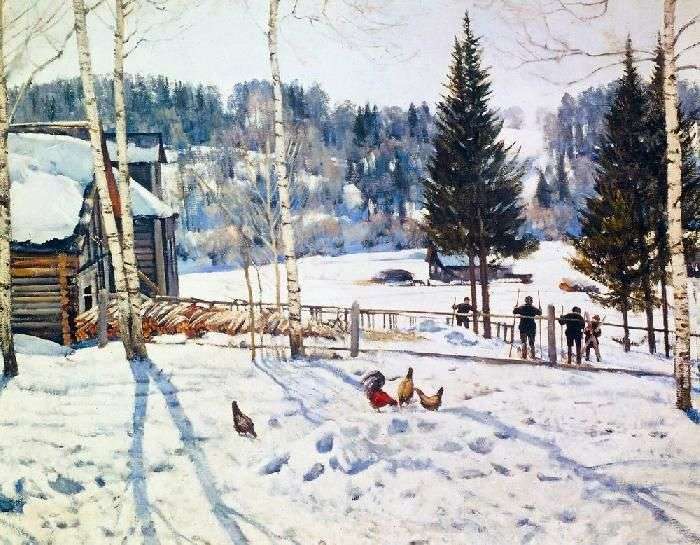
The great skill of Yuon-landscape painter is that he can translate the most usual landscape motif into an artistic image that attracts the poetry and freshness of the perception of the world. A vivid example of this is one of the best paintings by the artist “The End of Winter: Noon”.
The artist painted a typical corner of the Moscow region. The country yard, snow-covered distance – everything is flooded with sun rays. Dazzling white trunks of birches and in the spring a loose snow. A wooden house on a hill, skiing children, chickens digging into the snow give the landscape “livelihood” and special warmth. In the simple, familiar landscape motif there is a lot of true poetry. The painting “The End of Winter, Noon” is distinguished by its naturalness, vital immediacy. It seems that the artist did not reflect on the composition, but simply wrote what was before his eyes. But actually it is not. The composition of this canvas has its own logic, why the picture produces such a whole impression. In fact, the fence divides it almost into equal parts horizontally, the house on the left is balanced by the dark masses of firs on the right.
The thoughtfulness of the compositional solution enabled Yuon to concentrate the viewer’s attention on the main thing he wanted to express, namely, on the feeling of vital forces concealed in nature, on the feeling of joy, festivity that a person experiences in the face of nature triumphant in its eternal beauty. This sensation and this feeling arise mainly thanks to the radiant color, with the help of which Yuon achieves the impression of a bright sunny day. With great skill written in the picture of snow, transparent blue shadows from trees, haze, enveloping the forest distance. This skill made it possible to convey with great conviction the state of nature on the eve of spring, when the sun begins to warm up when the shadows become deeper, when nature wakes up after winter days. It is important that Yuon connects the life of nature with man,
However, the feeling of festivity, which radiates the picture, it seems due to the presence in the picture of people natural, alive. The artist seems to say that his experiences when looking at this kind of akin to the experiences of skiers returning from a walk. He immediately introduces the viewer into his world of feelings and thoughts, reveals to him the beautiful in nature. By means of composition and color, the artist asserts the ever-living life of nature and its impact on the feelings and thoughts of man. These means are very characteristic. Despite its construction, the picture gives the impression of freedom and naturalness. It seems to be a fragment of a large panorama: the edges of the frame cut off the tops of birches and the blue shadows from the trees, the spectator imagines the whole house and ate at the right edge of the picture.
Coloring the picture is based on contrasting comparisons and combinations. Dark, brown-green spruce is contrasted with white snow with intense blue and blue shadows. The color composition of the canvas is enlivened by the bright spot of a stack of yellow firewood and a red cock rummaging through the snow. Colorful combinations create that emotional tension, which helps the artist express the feeling of freshness, joy, festiveness, arising from looking at this exultant nature. Yun’s painting shows the use of great realistic traditions of Russian landscape painting. Here you can recall the colorful canvases of Kuindzhi or the contemporary of Yuon of the artist Rylov. These traditions consist primarily in the truthful depiction of nature, in an effort to find in it the features that would allow the artist to express his emotions.
These traditions also consist in the desire to create a landscape-picture, containing in itself a big world, which affirms a significant idea. But it is natural that Yuon, as a master extremely original and original, reworked these traditions in his own way and expressed his picture of the thoughts that thrilled his contemporaries – Soviet people of the late 1920s. Yuon’s painting “The End of Winter, Noon”, featuring a bright, decorative sound of colors, wins the spirit of life affirmation, optimism. The art of this fine painter will always serve as an example of purposeful and thoughtful creative work aimed at deep comprehension of reality and expression in artistic images of the great social ideas of his epoch.
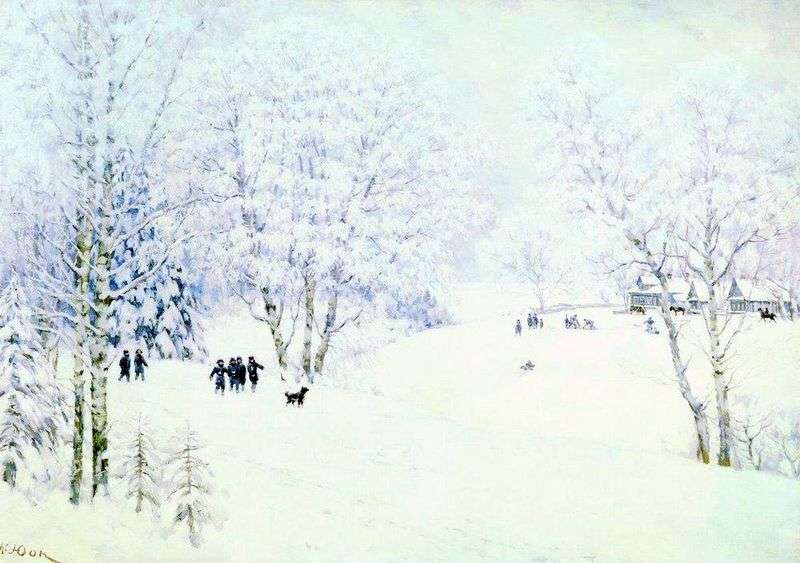 Russian Winter. Ligachevo by Konstantin Yuon
Russian Winter. Ligachevo by Konstantin Yuon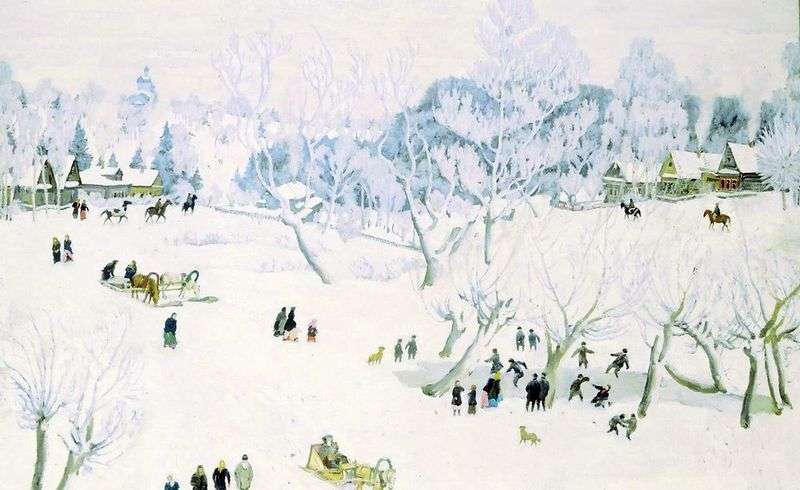 Sorceress-Winter by Konstantin Yuon
Sorceress-Winter by Konstantin Yuon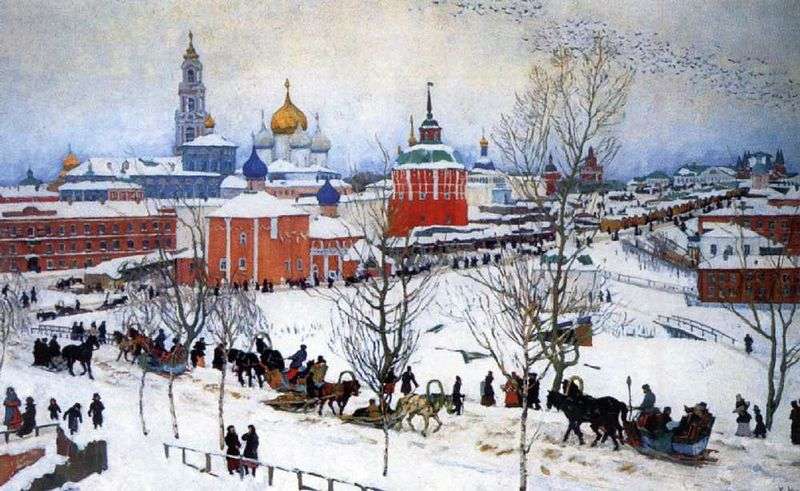 Trinity Lavra in the Winter by Konstantin Yuon
Trinity Lavra in the Winter by Konstantin Yuon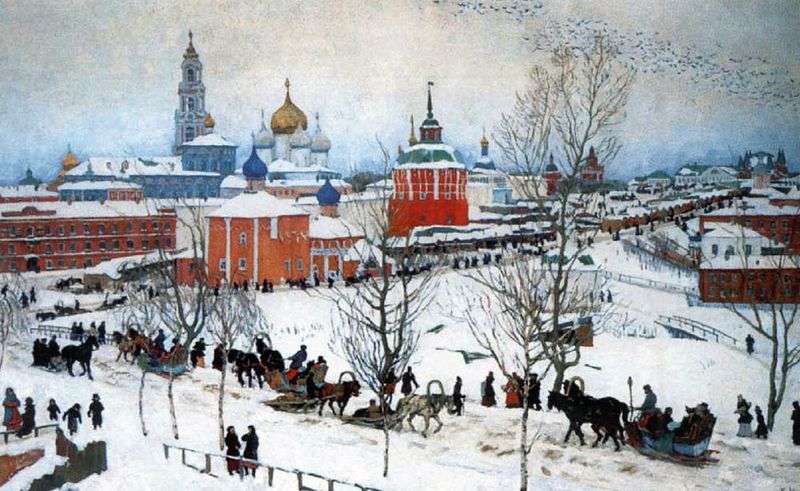 Winter. Rostov the Great by Konstantin Yuon
Winter. Rostov the Great by Konstantin Yuon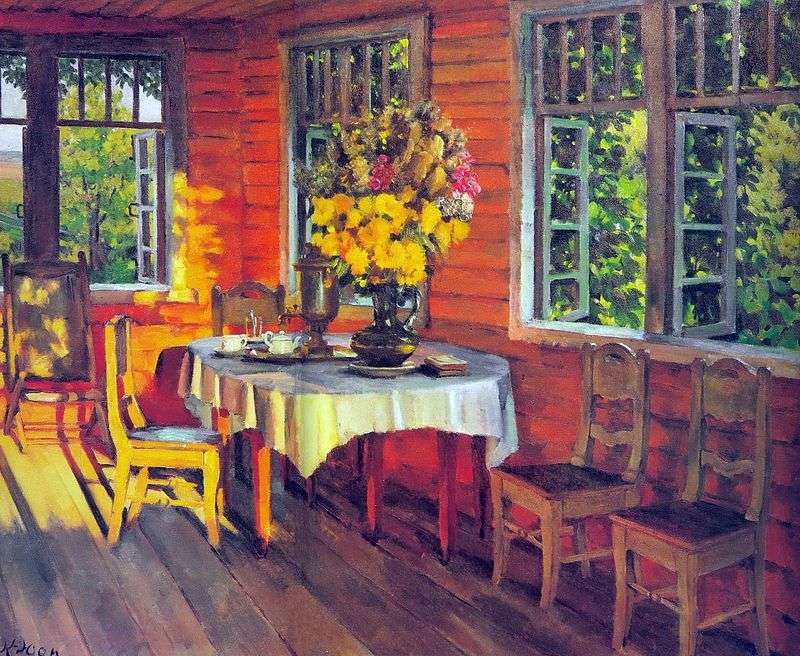 August evening. The last ray. Ligachevo by Konstantin Yuon
August evening. The last ray. Ligachevo by Konstantin Yuon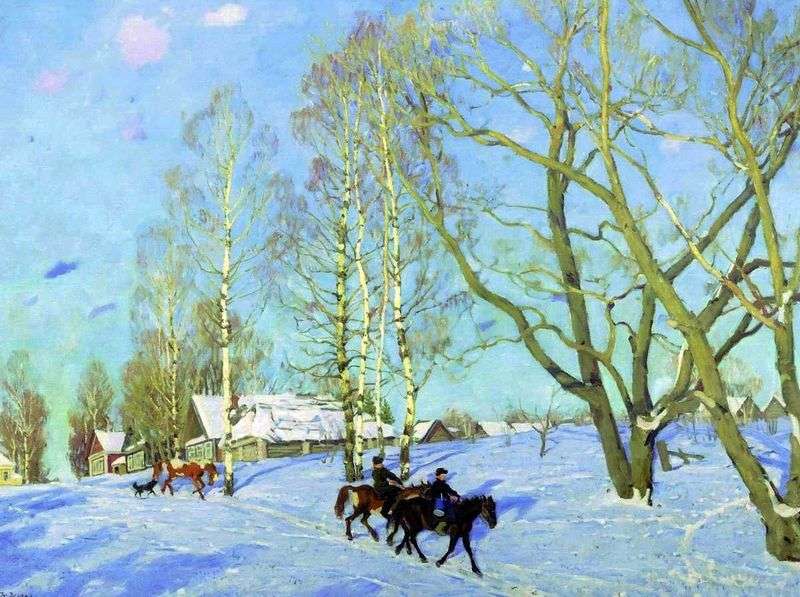 The March sun by Konstantin Yuon
The March sun by Konstantin Yuon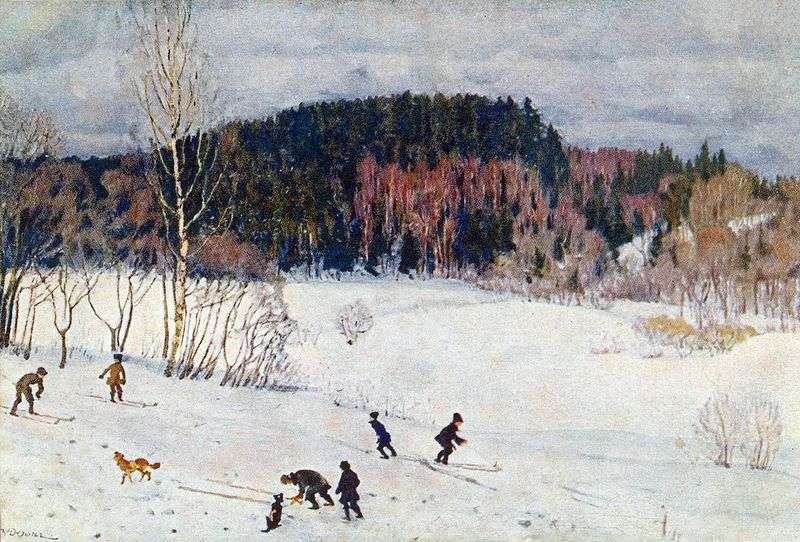 Landscape with skiers by Konstantin Yuon
Landscape with skiers by Konstantin Yuon Trinity-St. Sergius Lavra in Winter by Konstantin Yuon
Trinity-St. Sergius Lavra in Winter by Konstantin Yuon